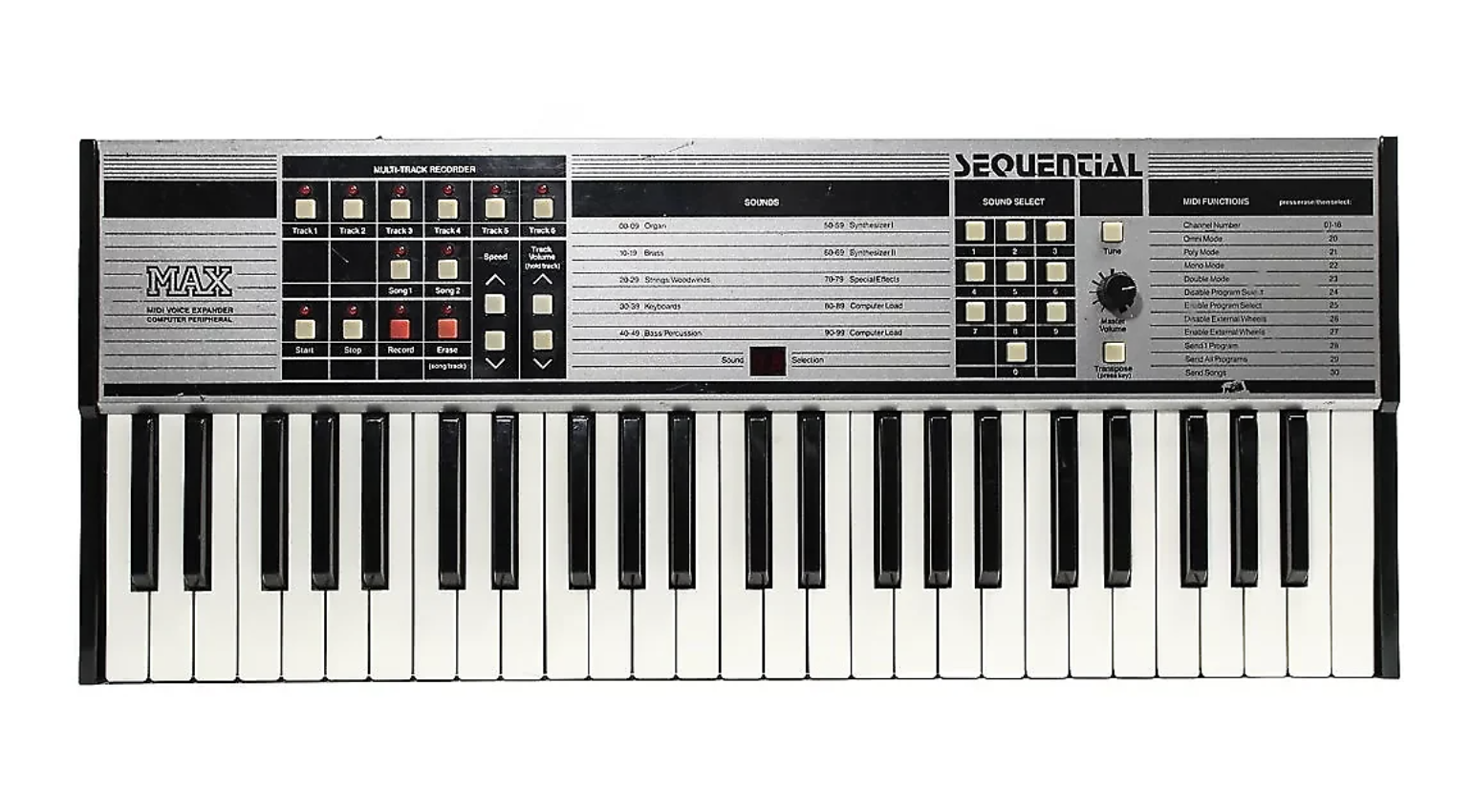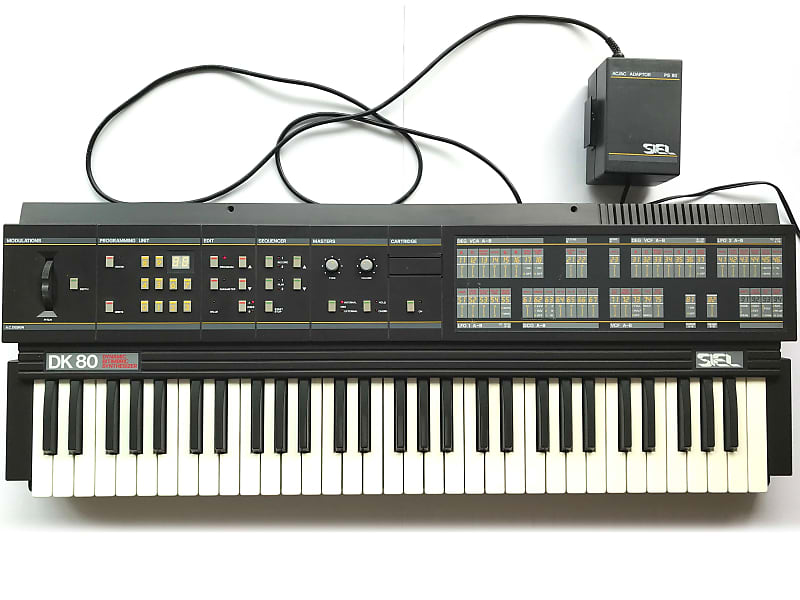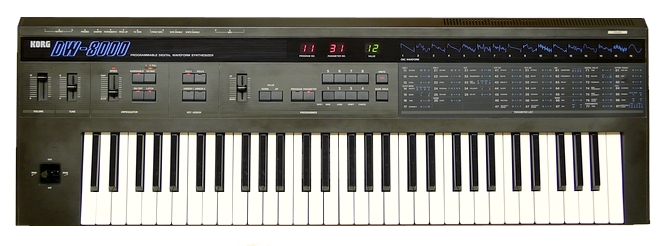The 1980s were a wild time for synthesizers. In the age of the big polysynths, it seemed like every time you stepped into your local music store there was another shiny new keyboard calling your name from the display area. Roland’s Juno series, epic monsters from Oberheim (and even one from Moog), tantalizing analog goodness from Korg, and of course, Yamaha’s line of FM synths.
It was Yamaha’s digital devices, starting with the drop of the DX7 in 1983, that really changed the game. Staggeringly popular, the DX7 and its follow-ups sent the rest of the synthesizer world scrambling to change. Between 1983 and the late ‘80s, when the transition to digital had been largely complete, companies still had to work their way through their planned product lineup, for better or for worse. While there were still many successful analog polys released during this time period, not every synth could be a big hit.
Many instruments considered failures at the time have since become hot ticket items on the secondhand market. Thanks to the popularity of vintage synths, many former also-rans are now seen as desirable. Additionally, the things that contributed to their original downfall—odd quirks, unstable firmware, just plain bad timing—now often no longer apply.
If you’ve been on the lookout for a new secret weapon, or want something on the unusual side to shake up your creative output, you may find a new treasure among these forgotten polys.

Until the early 1980s, Akai was known as a consumer electronics company specializing in audio. Then they launched a new branch, Akai Professional, and entered the musical instrument market, releasing a line of analog synthesizers as well as other gear aimed at home-recording musicians.Their line of analog polys never quite caught on, facing strong competition from Roland’s Juno series—the closest in price and specs—and Yamaha’s DX synths. While often compared to Junos, Akai’s instruments could (and can) do their own thing, with a roughness and edginess to their sound that makes them a solid choice for industrial, techno and harder genres.
The first that Akai released was 1984’s AX80. Designed by Japanese synthesizer legend Kazuo Morioka of Hillwood/Firstman fame, it featured eight voices of polyphony with dual DCO oscillators paired with Curtis Electronics CEM 3372 filters. Akai followed it up with the six-voice AX60 two years later. This one had a single oscillator per voice, although it used VCOs rather than DCOs like the AX80. Both oscillators and filters came courtesy of CEM 3394 chips, the same one that was in other synths from the era such as Sequential Circuits’ Six-Trak and Max (see below).
The final synth in the series was the AX73, which had a similar synthesis architecture to the AX60 but looked more like one of its samplers. There was also a VX90 rackmount version. Interestingly, you could pair an Akai sampler of the time (S-612, S-900, etc.) with the AX60 or AX73 and incorporate it into its signal path as a second oscillator.

In the late 1970s, Sequential Circuits was on top of the world. The Dave Smith-designed Prophet-5 was selling like crazy and everybody wanted a big analog polysynth. Fast forward to 1984 and the market was quite different. Sequential went through a period of releasing interesting but not amazing analog synthesizers, a number of them based around the Curtis Electronics CEM 3394, the synthesizer on a chip.
The first of these was the Six-Trak, a six voice, six-part multitimbral analog poly—leave it to the inventor of MIDI to pioneer multitimbrality—that even came with a six-part sequencer. That same year, Sequential released Max, a cut-down Six-Trak without the incredible unison mode or editable presets. Sequential wanted you to connect it to a Commodore 64 and make edits using their Model 920 software. Computer-based editors are common now but 40 years ago it left people scratching their heads. To be able to edit the Max you’d need a Commodore home computer, which not that many people had, plus the editor—and the ability to make it all work. There just wasn’t a big enough market for it. It’s a shame because the Max sounded just fine, smooth and clean.
Now, thanks to modern computer and iPad editors, the Max can live again as a fully functional instrument. It may not offer as many options as its older brother Six-Trak (or later sibling MultiTrak) but it’s worth a look and listen—and it’s still fairly affordable.

By 1984, Italian keyboard manufacturer Crumar was being dogged by complaints of unreliability. To get around this, they released their next instrument, dubbed One, under the brand name Bit. Bit One may have sounded vaguely digital (and that was probably the point) but it was an analog synthesizer—not what people really wanted at the time but what they definitely want right now.
Designed by Mario Maggi, the maestro behind the Elka Synthex, Crumar’s first MIDI-capable synth was, by all accounts, a mixed bag. The six-voice synth with dual DCOs was low-priced and had velocity sensitivity (yay!) but it lacked an oscillator mixer—they were either on or off—or a way to modulate pulse width with an LFO (boo!). You could split the keyboard like a Jupiter-8 and even layer the two voices (yay!) but the interface was arcane and clunky (boo!). As you’d expect from Signior Maggi, though, it sounded wonderful.
Bit made some improvements with the rackmount version, the Bit 01, in 1985 and then the full keyboard version, Bit 99, later that same year. Despite the price and sound, they just never took off. However, they’ve found a new life with modern collectors who can appreciate them—and even embrace them—for their quirks.

Another Italian manufacturer with some interesting ‘80s synthesizers was Siel. The same year that Crumar released its Bit One, Siel debuted the DK80. A “bitimbric” synthesizer, it offered a keyboard like the Bit One that could be split into two separate sounds or layered for big juicy ones. To make sure you didn’t run out of notes too soon, it gave you 12 voices, with each layer getting six. It really was like having two synths in one, with each version having a DCO, VCF, an envelope each for the filter and VCA, two LFOs, a chorus and overall volume. It may look like a block of Legos—for some this may be a selling point—but if you’d prefer a tabletop version with no keys, there’s always the Expander 80.
Siel followed the DK80 up with the DK70, a smaller and even quirkier synth with serious Poly-800 envy.

Korg had a banner year in 1983 when its Poly-800—one of the first polysynths to break the $1000 barrier—was released. It sold bucketloads and helped a new generation of musicians get their first synthesizer. Responding to Yamaha and its DX7, Korg next tried to do something digital. That something was 1985’s DW-6000, a hybrid synth that used single-cycle PCM waveforms as oscillators in an otherwise analog signal path.
It was an interesting idea but Korg rendered the DW-6000 effectively pointless when they superseded it with the DW-8000 later that same year. It doubled the number of waveforms to 16, upped the voice count from six to eight, added a velocity sensitive keyboard with aftertouch and an arpeggiator, and replaced the analog chorus with a digital delay. They even sold it for less than the DW-6000 had cost on release.
So why buy a DW-6000 and not a DW-8000 today? It’s cheaper, for one, and it also looks better. And the keybed on the 8000 hasn’t held up so well. If you’re after a nice hybrid synth that’s also an affordable piece of history, the DW-6000 is for you.

Although there was never any issue with the sound quality of Oberheim’s Matrix-1000, by 1988 when it was released most musicians just weren’t that interested in analog. This was the year that Korg debuted the M1 and, with Roland’s D-50 already on the market, few had time for an analog rackmount synth—especially one that essentially only played presets.
Based on the Matrix-6, the Matrix-1000 was a fully featured synthesizer under the hood. If you had an old editing package or even a Matrix-6, you could program it, but most who bought it just used the admittedly pretty nice 800 factory presets. After Gibson acquired Oberheim, it retired the synth but put it back into production in 1994 with a white faceplate to match its Don Buchla-designed OBMx.
These days, editing is as easy as hooking it up to a computer. Once done, you have access to the entire synthesis architecture, including the powerful modulation matrix that gave it its name. While it’s not as cheap as it used to be, it is the most affordable Oberheim synth on the market.
